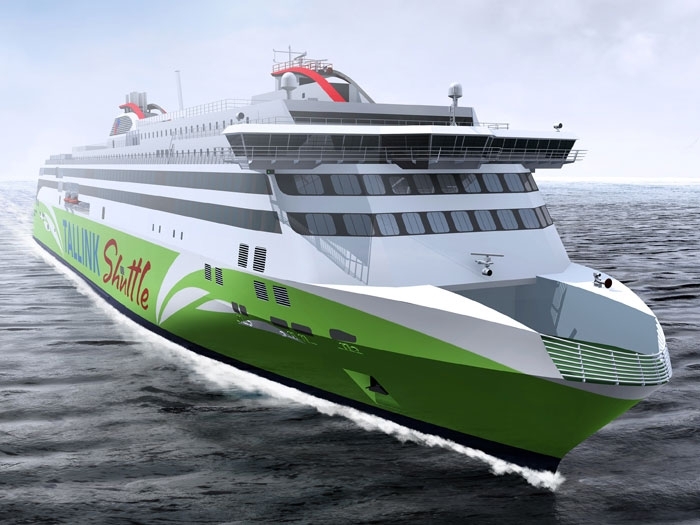
Tallink LNG fueled ferry to have Wärtsilä DF engines
Written by Nick Blenkey
MARCH 12, 2015 — The new fast ropax ferry ordered by Estonia’s Tallink Grupp at the Meyer Turku shipyard in Finland (see earlier story), will feature Wärtsilä dual-fuel engines running primarily on liquefied natural gas (LNG), enabling it to comply with emissions limits in the Baltic Sea is designated as a Sulfur Emissions Control Area (SECA).
When operating in gas mode, the sulfur oxide (SOx) and particle emissions from the Wärtsilä DF engines are negligible at almost zero percent while the nitrogen oxide (NOx) emissions are at least 85 percent below those specified in the current IMO regulations, and CO2 emissions are some 25 percent less than those of a conventional marine engine running on diesel fuel.
Wärtsilä’s scope of supply includes three 12-cylinder Wärtsilä 50DF and two 6-cylinder Wärtsilä 50DF main engines, as well as two Wärtsilä fixed pitch propellers and propeller shaft lines. The equipment will be delivered to the yard in early 2016.
“The ferry will operate at fairly high speed and to very tight schedules. It is, therefore, important to the customer that the main engine propulsion is highly efficient and extremely reliable,” says Mika Ojutkangas, General manager, Sales, Wärtsilä Ship Power. “Wärtsilä’s extensive track record is proof of our ability to meet these criteria. At the same time, we are the leading supplier of gas fueled solutions to the marine industry and this was another reason for being awarded this important contract.”
“The Wärtsilä engines are more energy efficient and thus consume less fuel, and for a next generation environmentally sustainable ferry that is what we were especially looking for,” says Tarvi-Carlos Tuulik, Head of Shipmanagement of AS Tallink Grupp.
Scheduled for delivery from the shipbuilder in 2017, the new 212 m long ferry will have a gross tonnage of 49,000 and will carry 2,800 passengers.
The Wärtsilä 50DF engine
The 50DF engine can be run on either natural gas, light fuel oil (LFO), or heavy fuel oil (HFO), and can smoothly switch between fuels whilst operating. It is designed to provide the same output regardless of the fuel. Both the gas admission and pilot fuel injection are electronically controlled. The engine functions are controlled by an advanced automation system that allows optimal running conditions to be set, independent of the ambient conditions or fuel type.
The 50DF engine is designed to allow use of Wärtsilä’s remote diagnosis and dynamic maintenance planning solutions. These features offer owners a significant reduction in operating costs by applying predictive maintenance principles and by optimizing engine performance.





Leave a Reply
You must be logged in to post a comment.